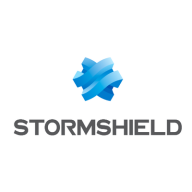

Stormshield Endpoint Security and Microsoft Defender for Endpoint are both robust security solutions. Microsoft Defender for Endpoint stands out due to its comprehensive features, making it worth the premium.
Features: Stormshield Endpoint Security offers strong encryption, advanced threat detection, and consistent performance. Microsoft Defender for Endpoint features advanced machine learning, excellent integration with Windows, and superior threat intelligence.
Room for Improvement: Stormshield Endpoint Security could enhance its reporting capabilities, streamline its update process, and improve user interface design. Microsoft Defender for Endpoint users suggest improvements in incident response times, reduced resource consumption, and better support for non-Windows environments.
Ease of Deployment and Customer Service: Stormshield Endpoint Security deployment is generally straightforward with responsive customer support. Microsoft Defender for Endpoint's deployment benefits from seamless integration with Windows environments, though its complexity can be challenging for non-Windows ecosystems. Microsoft Defender for Endpoint's customer service is efficient but less personalized than Stormshield's.
Pricing and ROI: Stormshield Endpoint Security is more cost-effective with faster ROI according to user reviews. Microsoft Defender for Endpoint, although more expensive, is perceived as offering better long-term value due to its feature set. Users are willing to invest more for the additional benefits it provides.

Microsoft Defender for Endpoint is a comprehensive security solution that provides advanced threat protection for organizations. It offers real-time protection against various types of cyber threats, including malware, viruses, ransomware, and phishing attacks.
With its powerful machine-learning capabilities, it can detect and block sophisticated attacks before they can cause any harm. The solution also includes endpoint detection and response (EDR) capabilities, allowing organizations to quickly investigate and respond to security incidents. It provides detailed insights into the attack timeline, enabling security teams to understand the scope and impact of an incident.
Microsoft Defender for Endpoint also offers proactive threat hunting, allowing organizations to proactively search for and identify potential threats within their network. It integrates seamlessly with other Microsoft security solutions, such as Microsoft Defender XDR, to provide a unified and holistic security approach. With its centralized management console, organizations can easily deploy, configure, and monitor the security solution across their entire network.
Microsoft Defender for Endpoint is a robust and scalable security solution that helps organizations protect their endpoints and data from evolving cyber threats.
We monitor all Endpoint Protection Platform (EPP) reviews to prevent fraudulent reviews and keep review quality high. We do not post reviews by company employees or direct competitors. We validate each review for authenticity via cross-reference with LinkedIn, and personal follow-up with the reviewer when necessary.